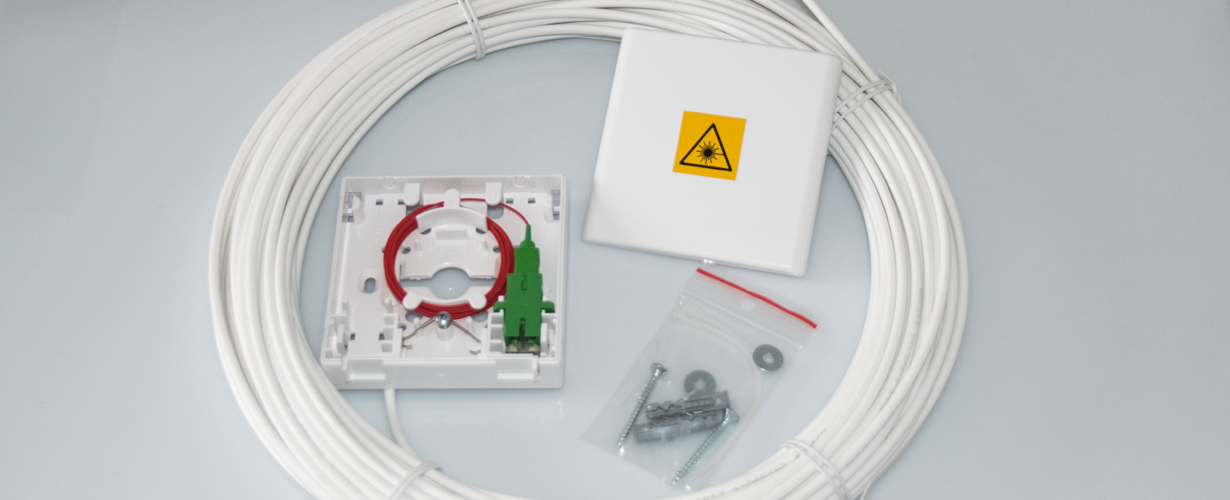We invite you to read the article that summarizes the series of entries about indoor optical networks. After discussing the issue of electromagnetic and laser radiation, as well as fire safety, OPTOMER experts provide information on restrictions on materials used in optical networks.
As we have already mentioned in previous texts in the Knowledge Center, Polish standards for the construction of indoor optical networks coincide with European standards, and the domestic construction law imposes the same safety requirements for all media, including fiber optic ones. The materials used in FTTH must, therefore, meet the non-flammability condition of the cable sheaths and must not generate acrid smoke or contain harmful compounds. The elements used should also be suitable for installation inside residential buildings and marked with the symbol LS0H, LSOH, or LSZH (Low Smoke Zero Halogen).
All materials used to build an optical indoor network are certified for compliance with the EU RoHS directive on the introduction of hazardous substances into circulation. This guarantees that the concentration limits for any of the harmful factors listed in the standard are not exceeded, concerning:
- lead,
- mercury,
- cadmium,
- hexavalent chromium,
- polybromobany biphenyls (PBB),
- polybrominated phenyl ethers (PBDE).
This means that the materials used in fiber optic installations do not pose a threat to human health or the environment.
You can find previous articles from the Knowledge Center on FTTH network security by clicking on the icons below:


